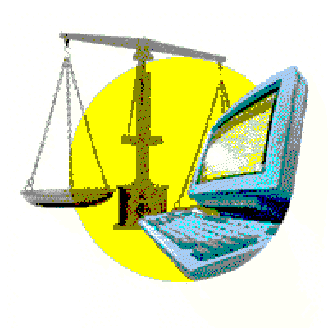 Defamation is a boundary where free speech and reputations collide. In Australian law, defamation is a tort, or in other words, a civil wrong. Whenever we say or write something that damages another person’s reputation, there is a possibility that we may infringe the law of defamation. For media practitioners the law is an unavoidable hazard when dealing with people whose livelihood depends on their reputation. However it may be possible to defame with “good reason”. The purpose of this essay will be to describe a brief history of how these law came into being, then show how the laws of defamation work, before showing what defences are plausible against defamation. The essay will conclude with a brief discussion on how the laws affect the Internet.
Defamation is a boundary where free speech and reputations collide. In Australian law, defamation is a tort, or in other words, a civil wrong. Whenever we say or write something that damages another person’s reputation, there is a possibility that we may infringe the law of defamation. For media practitioners the law is an unavoidable hazard when dealing with people whose livelihood depends on their reputation. However it may be possible to defame with “good reason”. The purpose of this essay will be to describe a brief history of how these law came into being, then show how the laws of defamation work, before showing what defences are plausible against defamation. The essay will conclude with a brief discussion on how the laws affect the Internet.Historically, reputation was regarded as part of a person’s spiritual being and defamation proceedings were held by England’s ecclesiastical courts. It came under the ambit of the common law courts in the 16th century where the key principle was observed: defamation was something the defence needed to prove. Colonial NSW put the law in legislative form in the Defamation Act of 1847. Although Australia was federated in 1901 it was not granted the power to deal with defamation, therefore each state was at liberty to frame its own laws. It took the commonwealth 105 years to finally enact uniform defamation laws.
As well as eliminating the insidious practice of forum shopping, the defence need no longer prove it is a matter of “public interest” as was the case in NSW or “public benefit" as was the case in Queensland, Tasmania and the ACT. However the basic imputation of truth remains. While defendants must prove the words are true, plaintiffs must show that the published words would make others think less of them. Plaintiffs must also show that the publication referred to them. Even if plaintiffs are not explicit named, they can sue if they show they meet the description of the defamed person. The foundation case of E. Hulton and co v Jones proved that plaintiffs can be defamed unintentionally even when using a fictitious name. The lesson for journalists is that if you must defame, then name.
There are a number of valid defences to defamation. As well as truth, the 2006 laws establish defences based on justification, contextual truth, absolute privilege, fair reporting, qualified privilege, honest opinion, defence of innocent dissemination and triviality. Justification means that the defendant proves that the imputations are substantially true. Contextual truth means that a defendant can justify the publication of a defamation because a more important or related truth can be proven. Absolute privilege is available only to those speaking in court or parliament whereas those who report their statements “fairly and accurately” are covered by the fair reporting defence. Qualified privilege implies a reciprocal duty and assumes the defendant has a “reasonable interest” in publishing the material. Reporting on public meetings attracts qualified privilege. Political qualified privilege was established by the Theophanous v Herald & Weekly Times case and clarified by Lange v ABC that Australians should have an interest in information concerning political matters. The defence of innocent dissemination is designed to protect subordinate publishers such as Internet Service Providers (ISPs).
 The innocent dissemination defence shows that the newer communication technologies are not immune from defamation laws. The Rindos v Hardwick case established a precedent to show that defamation laws apply on the internet. It is impossible for ISPs to be aware of information content prior to publication. Clause 91 (1) of Schedule 5 to the 1992 Broadcasting Services Act (Cth) provides a statutory defence for an ISP which hosts internet content in Australia and who was not aware they were hosting a defamatory publication. However liability in a defamation case attaches to everyone who takes part in a publication, whether intentional or not. The new uniform 2006 laws have adopted the English common law defence by protecting subordinate publishers.
The innocent dissemination defence shows that the newer communication technologies are not immune from defamation laws. The Rindos v Hardwick case established a precedent to show that defamation laws apply on the internet. It is impossible for ISPs to be aware of information content prior to publication. Clause 91 (1) of Schedule 5 to the 1992 Broadcasting Services Act (Cth) provides a statutory defence for an ISP which hosts internet content in Australia and who was not aware they were hosting a defamatory publication. However liability in a defamation case attaches to everyone who takes part in a publication, whether intentional or not. The new uniform 2006 laws have adopted the English common law defence by protecting subordinate publishers.
No comments:
Post a Comment